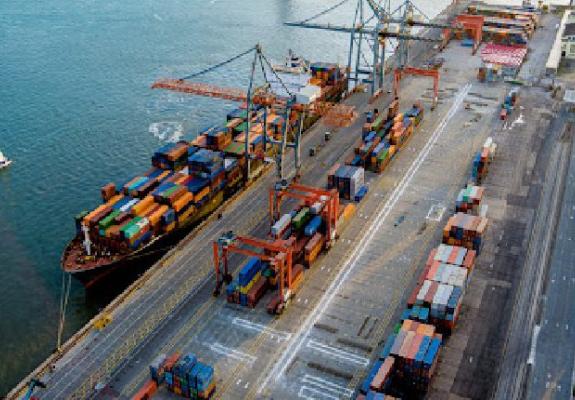Green Jobs to Employ 1 in 4 Workers in Cyprus by 2030
The Professional, Scientific, and Technical Activities Sector Will Employ the Largest Number of Workers in Green Sectors
One in four workers in Cyprus is expected to be employed in sectors contributing to the green economy, according to a study by the Human Resource Development Authority of Cyprus (HRDA), titled "Identifying Needs for Green Jobs and Skills in the Cypriot Economy 2024-2030."
According to an HRDA announcement, the study's primary goal is to comprehensively examine and analyze the green economy and related professions, provide forecasts for employment and the needs of green sectors, and identify the necessary green skills for the 2024-2030 period.
The report notes that Cyprus must achieve ambitious national targets based on the European Green Deal. These include reducing greenhouse gas emissions, increasing energy efficiency and renewable energy use, and improving waste and water resource management.
However, despite significant efforts and planned projects, the study points out that Cyprus lags behind other EU countries in meeting these targets. Key challenges include waste management, low recycling rates, energy efficiency, next-generation energy infrastructure, sustainable transport, the management of declining water resources, sustainable agriculture, and reducing greenhouse gas emissions.
The green economy, as defined in the study, includes technologies, goods, and services that reduce environmental risk and minimize pollution and the use of natural resources.
Employment in sectors contributing to Cyprus's green economy represents a significant portion of the workforce, rising from 23.7% in 2024 to 24.2% in 2030. By 2030, 122,315 people, or nearly one in four workers, will be employed in green economy sectors. The annual total demand for jobs is estimated at 3,125 people, or 2.7%, accounting for 24.8% of the overall labor market needs.
The professional, scientific, and technical activities sector will employ the largest number of workers in green sectors, with nearly one in three green economy workers expected to be employed in this field. The sector will also have the highest annual job demand, with 873 workers, or 2.3%, between 2024 and 2030.
The information and communications sector, the second-largest green sector, is expected to continue its strong growth. More than one in six green economy workers will be employed in this sector, with an annual job demand of 808 workers, or 4.1%. Development needs will make up the majority of this demand (80.2%).
Among green economy professions, the highest number of workers will be in the category of graduates. This group will also see the highest annual employment demand during 2024-2030, with 1,528 workers, or 3.4%, and 72.5% of this demand driven by development needs.
Significant employment needs will also arise for skilled tradespeople, the second-largest professional category. Their total annual demand for 2024-2030 will reach 690 workers, or 2.3%, with slightly higher demand from retirements (359 workers) than from development needs (331 workers).

A key factor in transitioning to a green economy is equipping the workforce with the necessary knowledge and skills. The study emphasizes the importance of developing a growth mindset and lifelong learning to continually upgrade both fundamental and specialized skills.
The main thematic categories of green skills identified can be used to design specialized training activities. Many of the green skills are new and relate to emerging green technologies, environmental legislation, and environmental issues. Additionally, adapted existing skills, such as project management, strategic planning, entrepreneurship, process optimization, personnel management, and quality management, are vital for developing the green economy.
The study concludes with specific recommendations aimed at addressing future labor market conditions during the transition to a green economy. These recommendations focus on employment, education, and training strategies.
For these proposals to be implemented effectively, the study stresses the need for synergy and complementarity among environmental, economic, social, education/training, and employment policies.
Therefore, the creation of a cohesive framework for collaboration and coordination among stakeholders responsible for shaping and implementing these strategies is crucial. This will ensure maximum efficiency and minimal economic and human resource costs.






